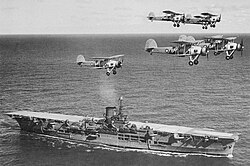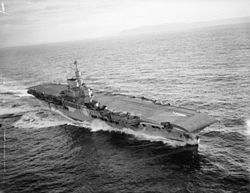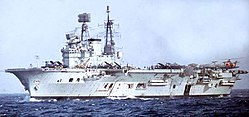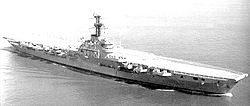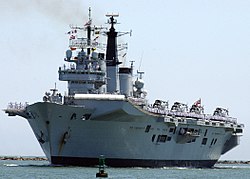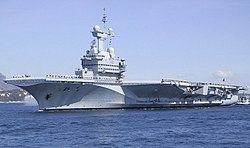


In less than 100 years aircraft carriers have developed into a powerful tool for the projection of power in pursuit of national interests.
Aircraft carriers have their origins during the days of World War I. The earliest experiments consisted of fitting temporary "flying off" platforms to the gun turrets of the warships of several nations, notably the United States and the United Kingdom. The first ship to be modified with a permanent flight deck was the battlecruiser HMS Furious, which initially had a single flying-off deck forward of the original superstructure. Subsequently, she was modified with a separate "landing on" deck aft and later with a full flush deck. Other ships, often liners, were modified to have full flush flight decks, HMS Argus being the first to have such modification begun. Those first faltering steps gave little indication of just how important the aircraft carrier was to prove to be. During the inter-war years (between the World Wars), Japan, the United Kingdom and the United States built up significant carrier fleets so that by the beginning of World War II, they had 18 carriers between them. The 1940 Battle of Taranto and 1941 Attack on Pearl Harbor in retrospect showed the world that the aircraft carrier was to be the most important ship in the modern fleet. Today, aircraft carriers are the capital ships of the navies they serve in, and in the case of modern US "supercarriers", they embark an air group that is effectively a small air force.
Contents
- Pre-carrier history
- World War I
- Between the wars
- 1920–1929
- 1930–1939
- World War II
- Post-war 1945–1949
- 1950–1959
- 1960–1969
- 1970–1979
- 1980–1989
- 1990–1999
- 2000–2009
- 2010–2019
- 2020–present
- See also
- Footnotes
- Citations
- References
- Books
- Articles
- Web Sites
- Other
- External links
This timeline is an attempt to provide a unified chronology of key dates [I] in carrier service. Aircraft carriers [II] often serve their navies for many decades and this chronology [III] enables the reader to track the progress of the carrier as it has developed alongside the evolution of aircraft for nearly a hundred years.









